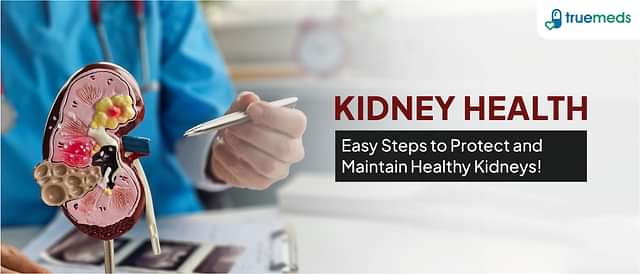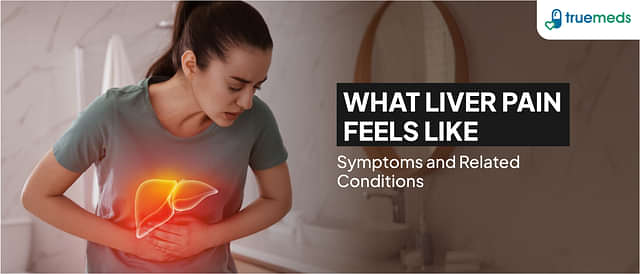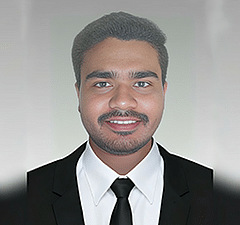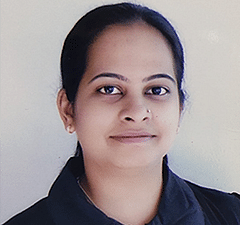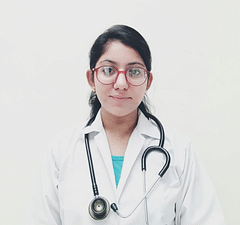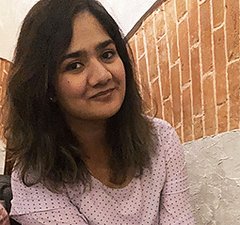Paediatric Brain Tumour
Paediatric brain tumours are abnormal growths of cells in the brain that occur in children. These tumours can be benign (non-cancerous) or malignant (cancerous) and include various types such as gliomas, ependymomas, embryonal tumours, craniopharyngiomas, germ cell tumours, choroid plexus tumours, and spinal cord tumours. Symptoms may vary depending on the tumour's location and size, and treatment options include surgery, chemotherapy, radiation therapy, and targeted therapy.
Last updated on : 17 Jul, 2025
Read time : 17 mins
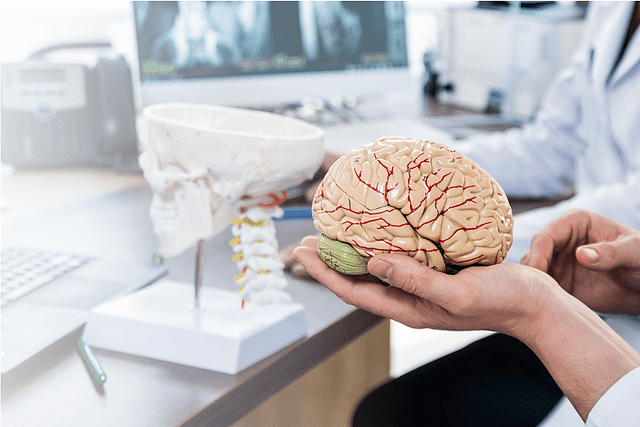
Overview of Disease
Paediatric brain tumours are a significant cause of morbidity and mortality in children. These tumours can develop in various parts of the brain, affecting different functions and presenting with a range of symptoms. Paediatric glioblastoma, a type of glioma, is a rare and aggressive form of brain tumour in children, accounting for approximately 3% of all childhood brain tumours. In this article, we will explore the various types of paediatric brain tumours, their symptoms, and available treatment options.
What is Paediatric Brain Tumour?
Paediatric brain tumours are abnormal growths of cells in the brain that occur in children. These tumours can develop from various types of brain cells and may be benign (non-cancerous) or malignant (cancerous). The most common types of paediatric brain tumours include gliomas, such as paediatric glioblastoma and paediatric glioma. The symptoms and treatment options for paediatric brain tumours depend on the tumour's location, size, and type. Understanding the different types of paediatric brain tumours is crucial for early detection and effective treatment.
Key Factors about Pediatric Brain Tumor
| Category | Details |
| Also Referred as | Glioma, Neuroglial tumours, Central Nervous System (CNS) tumours |
| Commonly Occurs In | Children under 15 years old, with varying frequencies by age group |
| Affected Organ | Brain, Spinal Cord |
| Type | Benign (Non-cancerous), Malignant (Cancerous) |
| Common Signs | Headaches, Nausea, vomiting, Vision changes, Irritability, Balance problems, Seizures |
| Consulting Specialist | Paediatric Neurologist, Paediatric Neurosurgeon, Paediatric Oncologist |
| Treatement Procedures | Surgery, Radiation therapy, Chemotherapy, Combination of treatments |
| Managed By | Chemotherapy agents like carboplatin and vincristine, surgical options (such as tumour resection or craniotomy) |
| Mimiciking Condition | Meningitis, Encephalitis, Hydrocephalus, Other neurological disorders |
Types of Pediatric Brain Tumor
The various types of paediatric brain tumours include:
1. Astrocytomas (gliomas): Astrocytomas are the most common type of gliomas. They develop from glial cells called astrocytes and are most often found in the cerebrum or cerebellum. Astrocytomas are graded from 1 to 4 based on their growth rate, with grade 1 being slow-growing and grade 4 (glioblastoma multiforme) being the most malignant. These include:
Optic pathway gliomas (OPGs): These are tumours that occur in or around the optic nerves, which send messages from the eyes to the brain. OPGs are frequently seen in children with neurofibromatosis and can cause vision loss and hormone problems.
Diffuse midline glioma: This includes diffuse intrinsic pontine gliomas (DIPGs) and other midline gliomas. DIPGs are typically diagnosed between the ages of 5 and 10 years and are challenging to treat due to their location.
2. Ependymomas: Ependymomas are tumours that arise from the ependymal cells lining the ventricles and central canal of the spinal cord. They can be benign or malignant and often require surgery as part of the treatment.
3. Embryonal tumours: Embryonal tumours are a group of aggressive, fast-growing tumours that develop from embryonic cells. They include:
Medulloblastomas: These are malignant brain tumours that form in the cerebellum and occur primarily in children between the ages of 4 and 9, affecting boys more frequently than girls. Medulloblastomas can spread along the spinal cord and typically require surgery plus other treatments.
Embryonal tumours with multi layered rosettes (ETMR): ETMRs are rare, aggressive tumours that usually affect children under 4 years old. They often occur in the cerebrum and can spread to other parts of the brain and spinal cord.
Atypical teratoid rhabdoid tumour (ATRT): ATRTs are rare, fast-growing tumours that typically affect children under 3 years old. They can occur anywhere in the brain and tend to spread to other parts of the brain and spinal cord.
Pineoblastoma: Pineoblastomas are rare, malignant tumours that develop in the pineal gland, which is located in the centre of the brain. They most often occur in children and young adults and can cause symptoms such as headaches, nausea, and vision problems.
4. Craniopharyngioma: Craniopharyngiomas are rare, usually benign tumours that develop near the pituitary gland and hypothalamus. There are two main types:
Adamantinous craniopharyngioma (ACP): ACPs are more common in children and can cause symptoms such as vision problems, hormonal imbalances, and delayed growth and development.
Papillary craniopharyngioma (PCP): PCPs are more common in adults and are generally less aggressive than ACPs.
5. Germ cell tumours: Germ cell tumours develop from germ cells, which are the cells that eventually develop into sperm in males and eggs in females. In the brain, they most often occur in the pineal gland or suprasellar region. There are two main types:
Non-germinomatous germ cell tumours (NGGCT) or secreting germ cell tumours: NGGCTs are more aggressive and can cause symptoms related to the hormones they secrete, such as precocious puberty.
Germinomas or non-secreting germ cell tumours: Germinomas are less aggressive and do not secrete hormones. They are more responsive to treatment than NGGCTs.
6. Choroid plexus tumours: Choroid plexus tumours develop in the choroid plexus, which is the tissue responsible for producing cerebrospinal fluid. There are three main types:
Choroid plexus papilloma: These are benign, slow-growing tumours that most often occur in children under 2 years old.
Atypical choroid plexus papilloma: These tumours have features between benign papillomas and malignant carcinomas.
Choroid plexus carcinoma: These are malignant, aggressive tumours that can spread to other parts of the brain and spinal cord. They most often occur in children under 3 years old.
7. Spinal cord tumours: Spinal cord tumours in children can include:
Astrocytomas: These are the most common type of spinal cord tumour in children.
Ependymomas: These tumours develop from the ependymal cells lining the central canal of the spinal cord.
Gangliomas: These are rare, slow-growing tumours that develop from ganglion cells.
ATRT: While more commonly found in the brain, ATRTs can also occur in the spinal cord.
Germ cell tumours: These tumours can occasionally develop in the spinal cord, particularly in the sacrococcygeal region.
Early Signs of Pediatric Brain Tumor
The early signs of paediatric brain tumours include:
Persistent headaches that worsen over time
Unexplained vomiting, especially in the morning
Seizures without a history of epilepsy
Changes in vision or eye movements
Difficulty with balance or coordination
Changes in behaviour or personality
Delayed or arrested puberty
A baby's head circumference increasing more than expected
Symptoms of Pediatric Brain Tumor
Paediatric brain tumours can present a variety of symptoms, which may vary based on the tumour's location, size, and type. Some of the common symptoms include:
Headaches: Persistent headaches are a common symptom in children with brain tumours. These headaches may be worse in the morning or worsen over time, often accompanied by vomiting.
Nausea and vomiting: Children may experience unexplained nausea and vomiting, which can be related to increased pressure in the skull caused by the tumour.
Changes in vision: Vision problems, such as blurred or double vision, difficulty focussing, or loss of peripheral vision, can occur. In some cases, children may also experience sudden vision changes.
Balance and coordination issues: Children may exhibit difficulties with balance, coordination, or walking, which can manifest as clumsiness or frequent falls.
Behavioural or personality changes: Changes in mood, personality, or behaviour, such as increased irritability or a decline in school performance, may indicate the presence of a brain tumour.
Seizures: Seizures can occur in children with brain tumours, particularly if the tumour is affecting areas of the brain that control electrical activity.
Weakness or numbness: Weakness, numbness, or paralysis in specific body parts, often on one side, can be a sign of a brain tumour affecting motor function.
Growth delays: In some cases, children may experience growth delays or changes in development, which can be associated with brain tumours.
Causes of Pediatric Brain Tumor
The exact causes of paediatric brain tumours are not fully understood, but several factors may contribute to their development. These include:
Genetic factors: Certain genetic conditions increase the risk of developing brain tumours in children. Syndromes such as neurofibromatosis types 1 and 2, Li-Fraumeni syndrome, and tuberous sclerosis are linked to a higher incidence of brain tumours.
Environmental factors: Exposure to certain environmental factors, such as ionising radiation (e.g., from previous cancer treatments), may contribute to the risk of developing brain tumours.
Age and gender: Paediatric brain tumours are more common in children aged 0 to 14 years, and certain types of tumours, like medulloblastomas, are more prevalent in boys.
Immune system issues: Children with weakened immune systems, such as those with autoimmune diseases or those who have undergone organ transplants, may have a higher risk of developing brain tumours.
Other medical conditions: Some pre-existing medical conditions may also contribute to the risk. For instance, children with a history of certain neurological disorders may be more susceptible to brain tumours.
Risk Factors
Exposure to ionising radiation, particularly to the head, which can occur from radiation therapy for other cancers like leukaemia
Certain genetic syndromes, such as neurofibromatosis types 1 and 2, tuberous sclerosis complex, Li-Fraumeni syndrome, and Von Hippel-Lindau disease
Parental and maternal factors, including exposure to pesticides, benzene, paternal occupational exposure to pesticides, benzene, and paint, maternal smoking during pregnancy, assisted reproductive technology and caesarean sections, and advanced parental age
Birth and perinatal factors, such as high birth weight and pre-term birth
Prevention of Pediatric Brain Tumor
Due to the limited understanding of the causes of paediatric brain tumours, prevention can be challenging. However, some general recommendations may help reduce the risk:
Minimising radiation exposure: Limiting exposure to ionising radiation is crucial in reducing the risk of childhood brain tumours.
Genetic Counselling: Families with a history of genetic syndromes associated with an increased risk of paediatric brain tumours should consider genetic counselling. This can help them understand their risk and make informed decisions about family planning and preventive measures.
Avoiding exposure to harmful substances: Parents should minimise their exposure to pesticides, benzene, and other harmful chemicals during pregnancy and early childhood to reduce potential risks.
Diagnosis & Tests
Diagnosing paediatric brain tumours involves a combination of clinical evaluation, imaging studies, and pathological examination. These include:
Clinical evaluation: The initial diagnosis begins with a thorough clinical evaluation, which includes a neurological examination to identify symptoms such as headaches, seizures, and changes in vision or behaviour. These symptoms may indicate the presence of a childhood brain tumour.
Magnetic resonance imaging (MRI): MRI uses magnetic fields and radio waves to create detailed images of the brain and is the preferred method for diagnosing brain tumours.
Computed tomography (CT) scan: CT scans use X-rays to create cross-sectional images of the brain and can help detect brain tumours, especially in emergency situations.
Positron emission tomography (PET) scan: PET scans use a radioactive tracer to create images of the brain's metabolic activity, which can help differentiate between tumour types and assess treatment response.
Biopsy: In most cases, a biopsy is performed to obtain a tissue sample from the tumour. This sample is then analysed by a pathologist to determine the specific type of paediatric brain tumour and its grade, which helps guide treatment decisions.
Lumbar puncture (spinal tap): In some cases, a doctor may perform a lumbar puncture to collect cerebrospinal fluid (CSF) for analysis. This test can help detect the presence of tumour cells in the CSF and evaluate the potential spread of the tumour.
Treatment & Management
The treatment of paediatric brain tumours depends on factors such as the type, size, and location of the tumour, the child’s age, and whether the tumour has spread. Here are the treatment options:
1. Surgery
Surgery is often the first step in treating paediatric brain tumours. The aim is to remove as much of the tumour as safely as possible. When tumours are located near critical areas of the brain, only a partial removal might be feasible to avoid complications.
Risks include bleeding, infection, and potential damage to nearby nerves. For example, operations near the optic nerves could lead to visual impairments.
2. Radiation Therapy
Radiation therapy uses powerful energy beams, such as X-rays or protons, to destroy tumour cells. Proton therapy is more precise and may protect healthy brain tissue, which is especially important for growing children. The child must remain still during sessions. If needed, mild sedation is given to younger children. Side effects include tiredness, skin irritation, hair loss, and sometimes nausea.
3. Radiosurgery
Radiosurgery delivers high-dose radiation to the tumour in a single session using technologies like LINAC, Gamma Knife, or proton beams. Each beam is weak on its own but together they deliver intense radiation to a targeted area. This method minimises exposure to the surrounding tissue. Side effects may include fatigue, scalp sensitivity, and in some cases, hair loss or skin blistering.
4. Kinase inhibitors
Kinase inhibitors are particularly useful in low-grade gliomas and other mutation-positive tumours. Medications such as Dabrafenib, Trametinib, and Tovorafenib help to manage brain tumours that show particular gene changes. These medicines block the signals that promote abnormal tumour growth. These options are particularly helpful in cases where the tumour carries the BRAF mutation, common in certain paediatric brain tumours. Here is how these medications work:
- Dabrafenib: A selective inhibitor of the BRAF V600E mutation, it blocks abnormal cell signalling and growth. It is prescribed for paediatric patients with BRAF V600E-mutant low-grade gliomas.
- Trametinib: A MEK1/MEK2 inhibitor that acts downstream of BRAF in the MAPK pathway, reducing tumour cell proliferation. It is used in combination with dabrafenib for treating BRAF-mutant gliomas.
- Tovorafenib: A selective pan-RAF kinase inhibitor targeting BRAF and CRAF. It is being investigated in clinical settings for relapsed or refractory paediatric brain tumours with MAPK pathway alterations.
5. IDH Gene targeting therapies
Some tumours contain changes in the IDH gene, which can fuel tumour development. Specialised therapies are designed to specifically target and block the effects of these changes. These treatments aim to slow down or stop the tumour's growth by altering the tumour's metabolism.
6. Vorasidenib
Vorasidenib is used for treating tumours with IDH gene mutations. It works by interfering with abnormal enzymes produced due to the mutation, helping to prevent tumour progression. This medicine offers a more personalised treatment plan and may reduce the need for intensive therapies in eligible children.
7. Everolimus
Everolimus is used in specific paediatric brain tumours where cell growth pathways are overly active. It helps by slowing down or stopping tumour cell division.
It’s particularly beneficial in children with tuberous sclerosis-related tumours and offers an oral treatment option with manageable side effects.
8. Recovering After Treatment
Rehabilitation is often necessary due to the effects of the tumour or treatment on brain function. Services include physical therapy, occupational therapy, speech therapy, and academic support.
Living with Disease
Regular follow-ups with doctors are necessary to monitor the child's progress, manage side effects, and adjust treatment plans as needed.
Counselling, support groups, and open communication can help children express their feelings and cope with the challenges of their diagnosis.
Schools may need to provide accommodations, such as tutoring or modified schedules, to support the child’s learning while considering their medical needs.
Families may need to establish new schedules, including time for rest, nutrition, and activities that promote well-being. A balanced diet and regular physical activity can contribute positively to the child’s health.
Encouraging social interaction is important for a child’s emotional health. Finding opportunities for the child to connect with peers, whether through playdates, group activities, or support networks, can help reduce feelings of isolation.
When to See a Doctor?
If you suspect that your child might have a paediatric brain tumour, it is crucial to seek medical attention promptly. Some key indicators that suggest you should consult a doctor include:
Frequent or severe headaches, especially those that are worse in the morning and accompanied by nausea and vomiting
Changes in vision, such as double vision, squinting, or covering one eye
Seizures, increased irritability, or changes in behaviour and personality
Motor or sensory deficits, such as weakness, numbness, or balance problems
Failure to thrive, loss of developmental milestones, or macrocephaly (an enlarged head) in infants
Increased lethargy or drowsiness, especially if accompanied by other neurological symptoms
Family history of genetic syndromes or conditions that increase the risk of brain tumours
Key Takeaways
Paediatric brain tumours can present with a variety of symptoms depending on the tumour's location and growth rate, such as headaches, nausea, vision changes, seizures, irritability, and motor or sensory deficits.
Early detection is crucial for effective management and treatment of childhood brain tumours.
Children with genetic syndromes or a family history of brain tumours should be monitored closely.
Treatment plans for paediatric brain tumour vary based on the tumour type, location, and the child's overall health and may include surgery, chemotherapy, or radiation therapy.
Providing emotional and psychological support to children with brain tumours and their families is essential for helping them cope with the challenges of living with a serious medical condition.
FAQs
What are the first signs of a brain tumour in children?
Initial signs of paediatric brain tumours include headaches, nausea, vomiting, vision changes, balance problems, seizures, behavioural changes, and physical symptoms like facial drooping or limb weakness.
What causes a paediatric brain tumour?
The precise cause of most paediatric brain tumours remains unknown. However, they are thought to originate from abnormal DNA changes in brain cells that cause uncontrolled growth.
What are the most common paediatric brain tumours?
Common types of paediatric brain tumours include astrocytomas (particularly pilocytic astrocytomas), medulloblastomas, ependymomas, craniopharyngiomas, and embryonal tumours such as primitive neuroectodermal tumours (PNETs).
How to detect brain tumour in child?
Detecting a paediatric brain tumour involves monitoring symptoms, seeking medical evaluation, undergoing neurological exams and imaging tests (MRI or CT scans), and potentially performing a biopsy for diagnosis.
Can a child survive a brain tumour?
With advancements in treatment, many children with brain tumours can survive and thrive. Factors influencing survival include the tumour type, location, grade, and the child's overall health.
What is the first stage of brain tumour?
The first stage of a brain tumour is typically characterised by the appearance of symptoms related to the tumour's location and the buildup of pressure within the skull.
How to prevent brain tumours in children?
Currently, there are no known ways to prevent paediatric brain tumours, as their exact causes remain unclear. However, early detection and prompt treatment can improve outcomes.
How to avoid a brain tumour?
While brain tumours cannot be completely avoided, maintaining a healthy lifestyle, minimising exposure to radiation, and addressing any genetic predispositions through regular check-ups may help lower the risk.
How to detect a brain tumour?
Brain tumours can be detected through a combination of neurological exams, imaging tests (MRI or CT scans), and biopsy procedures to analyse the tumour tissue.
At what age brain tumour is common?
Brain tumours can occur at any age, but certain types are more common in specific age groups. For instance, medulloblastomas are frequently diagnosed in children between 4 and 9 years old.
References
Johns Hopkins Medicine. (n.d.). paediatric Brain tumours. Retrieved May 27, 2023, from https://www.hopkinsmedicine.org/health/conditions-and-diseases/brain-tumour/paediatric-brain-tumours
American Cancer Society. (2021, February 1). What Are the Risk Factors for Brain and Spinal Cord tumours in Children? https://www.cancer.org/cancer/brain-spinal-cord-tumours-children/causes-risks-prevention/risk-factors.html
Cancer Research UK. (2018, April 17). Symptoms of brain tumours in children. https://www.cancerresearchuk.org/about-cancer/childrens-cancer/brain-tumours/symptoms
National Cancer Institute. (2021). Childhood brain and spinal cord tumours treatment overview (PDQ®)–Health professional version. https://www.cancer.gov/types/brain/hp/child-brain-treatment-pdq
Check Related Salts
Latest health articles
Top Health Essentials



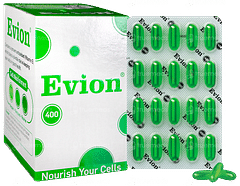



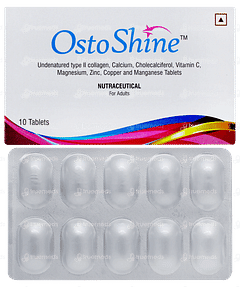

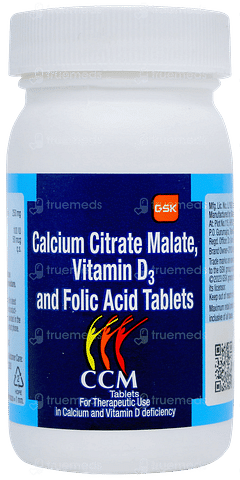
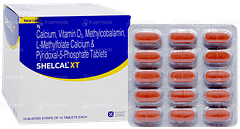



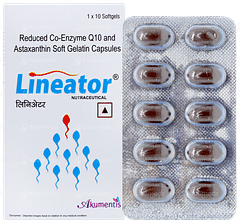


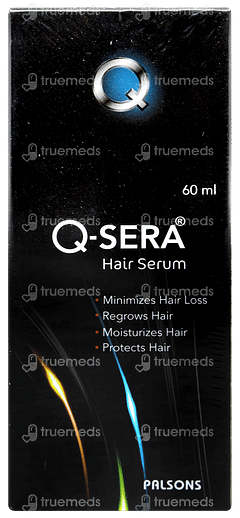

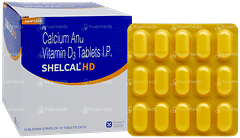
Disclaimer
Top-Selling Medicines:
...View more
Top-OTC medicines:
...View more
Company
About UsHealth ArticleHealth StoriesDiseases & Health ConditionsAyurvedaAll MedicinesAll BrandsNeed HelpFAQSecuritySubscribe
Registered Office Address
Grievance Officer
Download Truemeds
Contact Us
Our customer representative team is available 7 days a week from 9 am - 9 pm.
v4.8.0
2025 - Truemeds | All rights reserved. Our content is for informational purposes only. See additional information.
Our Payment Partners












